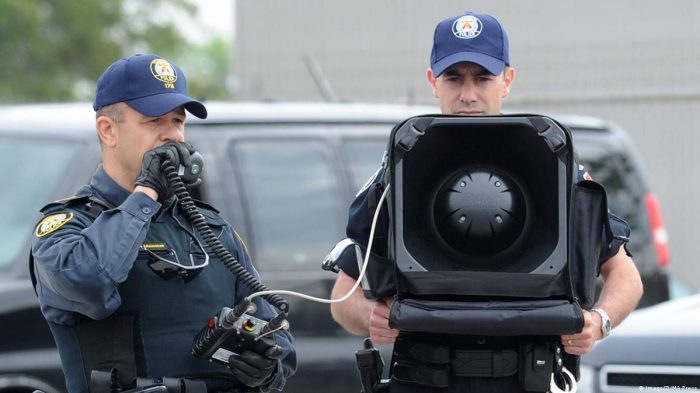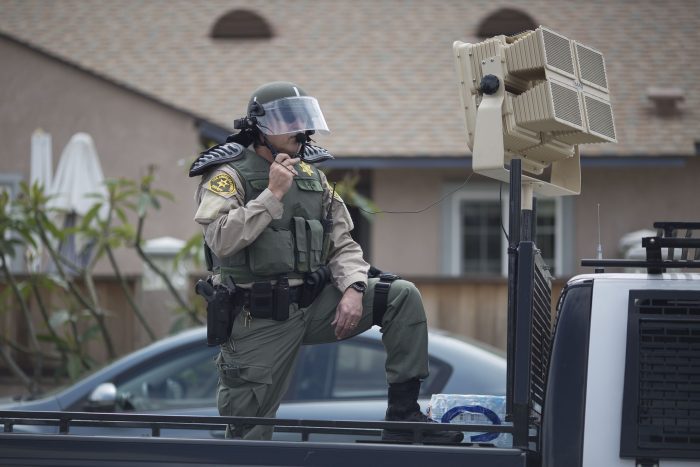Because of the protests happening in every corner of the country, the police needed a “gentle” weapon that could restore the peace and raise their voice. So, they came with sonic weapons.
These weapons go by many names, such as sound cannons and Long Range Acoustic Devices or LRADs. The sound cannons are designed to eliminate a certain threat over a long distance by dispersing a high-pitched tone. Wondering how to protect yourself from sonic weapons?
These audio devices are often used to calm down general public speakers. In a worst-case scenario, the sonic weapons may cause disorientation, ear pain, headaches, and other negative effects on the body. Introducing sonic weapons with loud sounds may induce ear damage and vomiting as well.
In this article, you can learn how to protect yourself from sonic weapons.

How to Protect Yourself From Sonic Weapons
Police departments have obtained LRADs, and every officer has the right to use the sonic weapon to calm a large group of civilians. People who like to express their opinions outside of their homes surely want to know how to protect themselves from sonic weapons.
Before I answer the question, I would like to point out that nothing can fully protect your hearing from sonic cannons, and they should be utilized as little as possible. But, since I am not in uniform, I cannot speak on behalf of the authorities.
Protect Yourself From Sonic Weapons or Low-Frequency Weapons
Wear Protective Equipment
Use earplugs or earmuffs that have a high Noise Reduction Rating (NRR) and are specifically designed for high-decibel noise reduction. Some of these are made for use at shooting ranges or construction sites and can significantly reduce the level of sound reaching your ears.
Maintain Distance
The effectiveness of sonic weapons decreases with distance due to the dispersion of sound waves. If you suspect the presence of a sonic weapon, try to get as far away from the source as possible.
Seek Shelter
Buildings, especially those with thick walls, can offer some protection from sonic weapons by absorbing and diffusing the sound waves. Even vehicles or other barriers can provide some protection.
Use Noise-Canceling Technology
This might not be fully effective against all types of sonic weapons, particularly those that use frequencies outside the normal range of human hearing. However, they can offer some level of protection, which, in turn, might reduce your chances of getting cancer.
Stay Informed and Aware
Often the best protection is to avoid situations where sonic weapons might be used. This means staying informed about local events, potential civil unrest, and military actions.
Seek Immediate Medical Attention
If you believe you’ve been exposed to a sonic weapon, seek medical attention immediately. Symptoms might include tinnitus (ringing in the ears), hearing loss, dizziness, nausea, or headaches. Early treatment can help reduce long-term damage.

What Is LRAD?
To fully understand how to protect yourself from sonic weapons, you first need to be aware of what an actual LRAD is so that when the time comes, you can avoid it. The sonic cannon or Long Range Acoustic Device is a sound energy weapon and speaker system initially designed for military use only in the 2000s.
The sonic weapon renders sound with extreme volume in a directional focus. Additionally, it works from a great distance and has more geographical precision than your average loudspeaker. On top, the weapon may incorporate crosshairs and a viewfinder so police officers can specifically target the sound’s location.
The LRADs have a built-in microphone and a deterrent tone based on frequencies that are, in most cases, painful to people’s ears. The microphone can be used for speech and includes a playback feature of the recording. The next time an officer uses the microphone to give orders to the crowd, you can prepare for the blast.
Truth be told, in most cases, the police use a polite tone to talk with people and give announcements. But there is always a possibility of the sonic cannon being used as a sound-blasting weapon.
Why are LRADs dangerous?
The Long Range Acoustic Devices produce a loud sound which can damage the auditory and vestibular systems. The sonic weapons have a range of sound from 80 to 160 dB.
People exposed to a prolonged sound of 85 dB have a high risk of damaging their hearing. At 120 dB, the sound is equal to a working jet engine, and there is instant hearing damage.
The sound at 130 dB can cause physical pain. At 140 dB, the body starts to experience physical discomfort, such as dizziness, vomiting, loss of balance, etc. A high level of 160 dB can burst your eardrum.
Conclusion
In this article, I gave you some tips on how to protect yourself from sonic weapons. I also explained the true power of sound cannons and what they can do. The impact of sonic weapons may cause permanent damage. If you are experiencing ringing in your ears after a sound blast, you may need to visit an audiologist.
